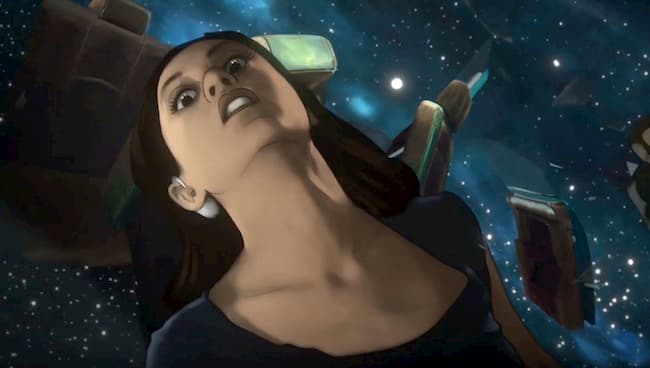‘Undone’: The Amazon animation series that applies the same lightsaber technique
Are you not curious to know how the series was recorded? It is called the rotoscopy.

AMAZON PRIME VIDEO
(READ THIS ARTICLE UNDOUBTEDLY BECAUSE WE DON’T GIVE YOU SPOILER OF THE AMAZON SERIES FIRST VIDEO ‘UNDONE.’ OR WE DO NOR DISCLOSE THE SCRIPT OF THE LAST EPISODE – ‘THAT NIGHT OF HALLOWEEN’-.)
What kind of animation does Undone use, the Amazon Prime Video series? How can it be that being animation, the characters seem so real?
It’s more than usual that you asked yourself these two questions after watching the series. If you look closely, the fact that live-action is combined simultaneously with animation makes you doubt what you are seeing: just as the protagonist doubts what is happening to him.
The series makes the viewer doubt about what they are seeing. What is this? What am I seeing? Is it just animation? But are they actors? There is a palpable tension between imagination and reality, dreams, and truth. But it is an intended effect.
About The Method:
The answer to the question is a rotoscope. The animation by rotoscopy, which consists of drawing on top of real images. Traditionally, actual frames were replaced by drawings traced in blank frames over the original structures.
It is in such a way that it was possible to capture in those drawings the expressions and proportions of the original filming. The series combines this technique (rotoscopy) with traditional animation (the images that go through the rotoscopy technology are then applied to scenarios designed entirely by animation). So on backgrounds that are nothing other than oil paintings.
The method works like this: the actors record the scene without sets. These scenes are sent to a studio (Minnow Mountain), where animators specialized in rotoscopy draw on the images. They turn the real actors into their drawn versions.
These images are then sent to another studio (Submarine) where 2D animators and a team of cartoonists (in ink and oil) take care of coloring the characters, and 3D animators give life to the scenarios in which the characters move accordingly. Then all this raw material is sent to assemble as would be done with conventional footage of a series.
This combination of techniques allows a screenwriter to write whatever he wants because he can do absolutely anything he can think of with a budget-friendly and more acceptable than that of traditional production.
This technique is what allows you to combine reality and dream. Because, in the end, this technique will enable us to experience the story as Alma is experiencing it. The character that Rosa Salazar plays (which we have heard before in Alita: Angel of combat – it is the protagonist – and seen in American Horror Story and Parenthood )
The Scene where the method was used:
Do you know that scene where Alma runs out of the hospital room in episode 2 (The hospital), that eternal room that repeats in a loop until she gives the correct answers, and jogs down a hallway? She reaches an elevator where she finds herself and starts to argue. Aren’t you curious to know how that scene was created? Check out this video in which the animators who made it happen:
What did we say about the lightsabers? Basically because to talk about rotoscopy. But we would have to talk about two Richard Linklater films ( Waking Life and A scanner darkly ). Unfortunately, many people have not seen (and that in the second one the key is Keanu Reeves and adapts a novel by Philip K. Dick.
By the way, Undone’s rotoscopy team is the same as the one who applied this technique in A scanner darkly ). But the common one of mortals is clear. So, fortunately, what a lightsaber is. We could also have gone back to Betty Boop and Popeye, and then to Walt Disney and Snow White and the seven dwarfs.
But The Star Wars, the truth, is more eloquent. In the original trilogy, the lightsabers were rods covered with the reflective material. It is then passed through the rotoscope in the assembly room to obtain its light appearance.
It was drawn on the top of the frames. If you look closely. Then sometimes, throughout the first three films (episodes IV, V and VI) the lights of the lights appear separated from their handles. They were animation failures, not a Force effect.
